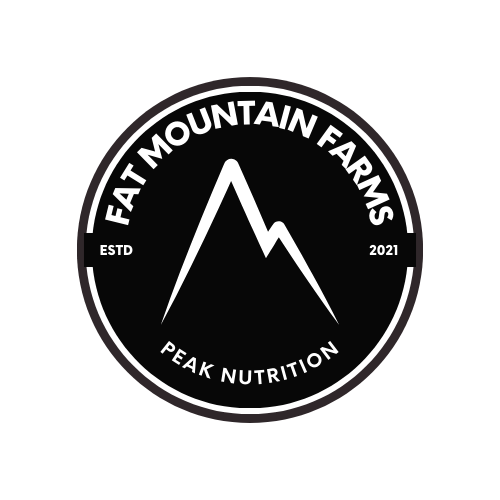I recently had someone ask me, "If the government knows that certain foods cause cancer, why do they keep allowing companies to produce that food?"
And the answer to that question is simple: Profit.
To most, it would seem obvious to stop companies from producing cancer causing foods so they can minimize as much sickness in people as possible, right?
Wrong. Unfortunately, keeping you sick is an extremely profitable business. And with sickness consistently on the rise every year, business is booming!
So who exactly is profiting off our poor wellbeing?
Well it's a dangerous alliance I like to call, "The Triangle of Death."
This unholy trinity is comprised of the "Big Three":
- The Government
- Big Agriculture
- Big Pharmaceutical
These three entities are all working in concert to perpetuate a system that prioritizes profit over the well-being of people. Understanding how this triangle operates is crucial for anyone concerned about their health and the future of our food system.
The Government: Enabler and Enforcer
At the apex of the triangle is the government, which plays a pivotal role in shaping policies that often favor big corporations at the expense of public health.
One of the most significant ways the government shapes policies is via subsidies for farmers. Subsidies were initially created during the Great Depression to offset the surplus of crops and low prices of both crops and livestock (Drisker, 2021).
Politicians often claim that their subsidies help alleviate rural poverty, but in reality, this farm aid goes to farm owners, whom often have relatively high incomes.
Between 1995-2014, the Environmental Working Group (EWG) found that 50 people on the Forbes 400 list of the wealthiest Americans received farm subsidies (Edwards, 2018).
Today, the largest pot of subsidies is channeled through insurance companies, which hides the identities of recipients, as noted. However, the Government Accountability Office found that at least four recipients of crop insurance subsidies have a net worth of more than $1.5 billion (Edwards, 2018).
This "revolving door" phenomenon makes you wonder who is really benefitting from these subsidies?
It's clearly not the average American as the result these subsidies are producing is a food system that promotes the consumption of cheap, nutrient-poor foods, contributing to a range of chronic health issues.
Big Agriculture: Profits Over Nutrition
Big agriculture, the second corner of the triangle, focuses on maximizing profits through industrial farming practices. This approach prioritizes high yields and low costs over nutritional value and environmental sustainability.
The current largest Agricultural product company in the world is Carghill, Inc, with reported revenues in 2021 of $114.6 billion (GlobalData, 2021).
Monocultures, heavy pesticide use, and genetically modified organisms (GMOs) are hallmarks of this system, leading to soil degradation, loss of biodiversity, and a decline in the nutritional quality of our food.
The prevalence of processed foods laden with sugar, unhealthy fats, and artificial additives can be traced back to the practices of big agriculture.
These foods are engineered to be addictive, creating a cycle of poor eating habits and chronic health problems such as obesity, diabetes, and heart disease.
Big Pharma: Treating Symptoms, Not Causes
Completing the triangle is big pharmaceutical companies, which stand to profit immensely from the health issues created by the other two corners.
Rather than addressing the root causes of disease—often linked to poor diet and environmental factors—big pharma focuses on developing medications that treat symptoms.
This approach ensures a steady stream of customers who rely on medications to manage their conditions, rather than seeking out and addressing the underlying causes.
Pharmaceutical companies invest heavily in marketing and lobbying to ensure their products are widely used, often influencing medical guidelines and practices.
This results in a healthcare system that prioritizes medication over prevention, keeping people dependent on drugs while the root causes of their ailments remain unaddressed.
Breaking the Cycle
Understanding the interplay between the government, big agriculture, and big pharma is the first step towards breaking free from this destructive cycle.
As consumers, we have the power to make informed choices that support our health and challenge the status quo. Here are a few steps we can take:
- Support Local and Regenerative Farmers: By purchasing food from local, regenerative farmers, we can support practices that prioritize soil health, biodiversity, and nutrient-rich produce.
- Educate Ourselves and Others: Knowledge is power. By educating ourselves about the connections between food, health, and the environment, we can make better choices and advocate for systemic change.
- Demand Transparency and Accountability: Holding our government and corporations accountable for their actions is crucial. This includes advocating for policies that prioritize public health over corporate profits.
- Focus on Prevention: Prioritize a diet rich in whole, unprocessed foods and adopt lifestyle habits that promote overall well-being, reducing the need for pharmaceutical interventions.
By recognizing and addressing the insidious effects of the Triangle of Death, we can take control of our health and contribute to a more sustainable and equitable food system. It's time to prioritize people over profits and ensure a healthier future for all.
References:
https://liberalarts.tamu.edu/blog/2021/11/03/farm-subsidies-harmful-or-helpful/
https://www.downsizinggovernment.org/agriculture/subsidies
https://www.globaldata.com/companies/top-companies-by-sector/agriculture-forestry/global-agricultural-products-companies-by-revenue/#:~:text=The%20United%20States%20of%20America,ended%20June%202021%20(FY2021).

